Avalanche Blockchain - Crypto Academy / S5W8 - Homework post for pelon53
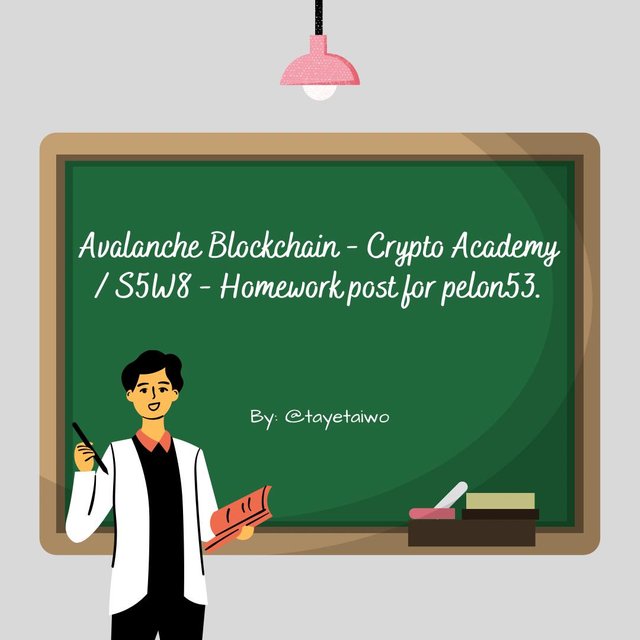

1. Explain X-Chain, C-Chain and P- chain in detail.

As we all know, blockchain technology is progressing every day, and new blockchains with unique and helpful features are emerging. Blockchain developers strive to create a blockchain that is more efficient, safe, and decentralized than other blockchains now in use.
According to the Blockchain Trilemma, blockchain developers may only choose between two of three factors: scalability, security, and decentralization. Bitcoin focus more on security and decentralization above scalability, the Bitcoin network's scalability remains a concern.
Avalanche Blockchain is a new blockchain that was created to solve the scalability problem that exists in the Bitcoin network. Kevin Sekniqi, Marfan "Ted" Yin, and Emin Gün Sirer, together with other collaborators, created this blockchain.
The Avalanche Blockchain is a distinct and one-of-a-kind blockchain since it is made up of three chains that work together to make the Avalanche Blockchain more successful and spectacular. In other chains, just one chain manages all of the variables (decentralization, scalability, and security). All three tasks are fulfilled by three separate chains on this blockchain. These chains are well detailed.
X-Chain
The X-Chain, commonly known as The Exchange Chain, is the initial chain in the Avalanche ecosystem. It is a chain where assets may be transferred and generated, as the name of the chain suggests. This chain allows for the creation and trade of the Avalanche blockchain's native token, the AVAX token, as well as other assets.
This chain, like the Ethereum network, lets users to exchange and generate tokens that are based on the Avalanche blockchain's rules and regulations. As a result, users may also generate alternative ERC20 coins. The Avalanche Consensus Protocol is the foundation for this chain. Transaction costs are paid with AVAX tokens.
C-Chain
The C-Chain, also known as The Contract Chain or The Smart Contract Chain, is the second chain in the Avalanche ecosystem. This chain's purpose is to enable developers to design their own smart contracts for Decentralized Applications (DApps). As a result, DApp developers may use this chain to design their smart contracts.
Because this chain is compatible with the Ethereum Virtual Machine (EVM), Avalanche users may access DApps created on the Ethereum network. The Snowman Consensus Protocol is the foundation for this chain. As a result, developers may use this chain to execute their NFTs, ERC20 tokens, and various DApps. The AVAX token is used to levy fees for the creation of smart contracts.
P-Chain
The P-Chain, also known as The Platform Chain, is the third chain in the Avalanche ecosystem. This chain's purpose is to enable for the formation of new subnets, the tracking and management of active subnets, and collaboration with network validators. The term Subnet refers to a set of validators who provide consensus for specialized networks.
A single Subnet validates a single blockchain, but each Subnet is capable of validating several blockchains. The Snowman Consensus Protocol, which is an extended version of the Avalanche Consensus Protocol, is also used in this chain.
So there you have it: the Avalanche blockchain's components. All of these chains execute their separate roles, and the Avalanche blockchain's combined function becomes the Avalanche blockchain's function. These sub-chains are in charge of increasing the network's transaction speed and scalability. Avalanche Blockchain's scalability and transaction verification speed are far superior than those of other blockchains at the time.

2. Explore the Avax Network platform . Screenshots required.

To learn more about the Avax Network, go to https://www.avax.network and use the Avax user interface.
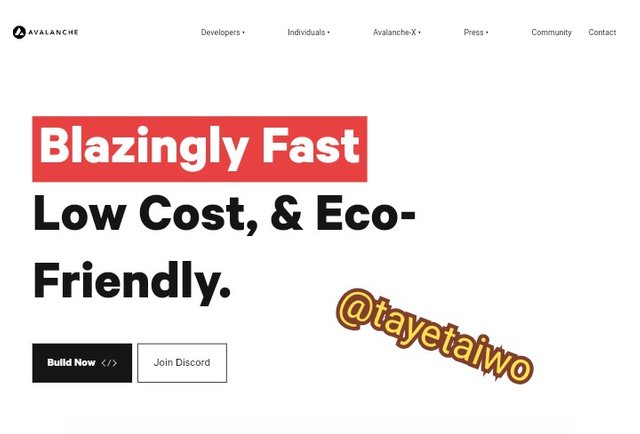
Users may choose from a variety of alternatives on the site, including "Developers, Individuals, Press, Community, and Contact." A table of comparisons between various blockchain and the Avax network may be found by scrolling down the webpage.
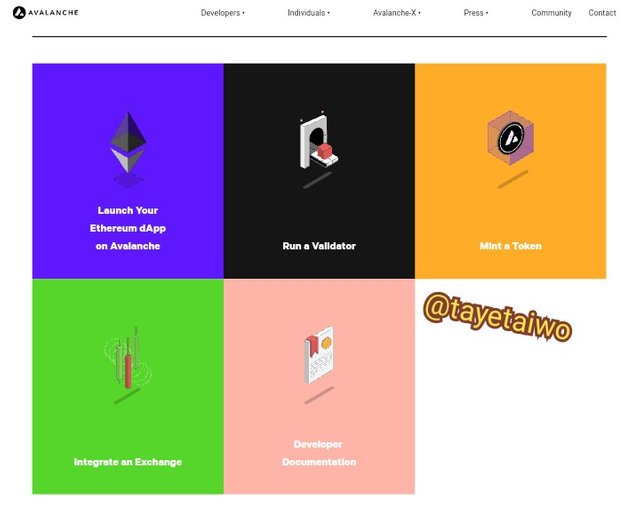
Developers may create programs with no restrictions, conduct validations, manufacture tokens, and integrate exchanges on the Developers page.
The Roadmap, Solutions, Ecosystem, Avalanche Wallet, Avalanche Explorer, and Avalanche Bridge are all found on the Individual page.
Avalanche Wallet
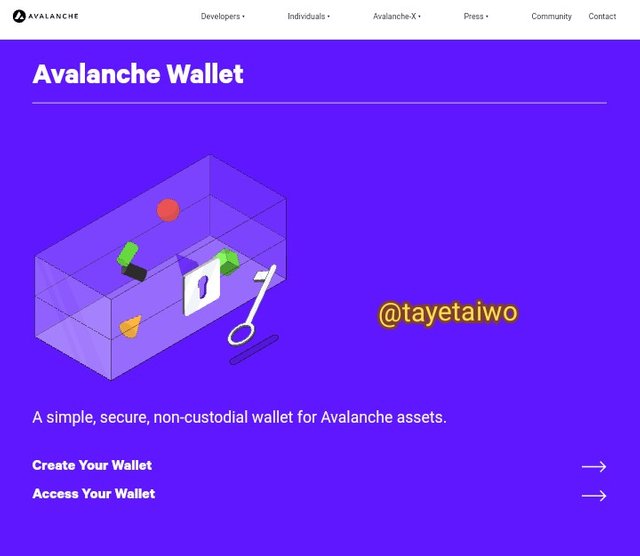
Users can use the Avalanche Wallet to create and access Avax wallets.
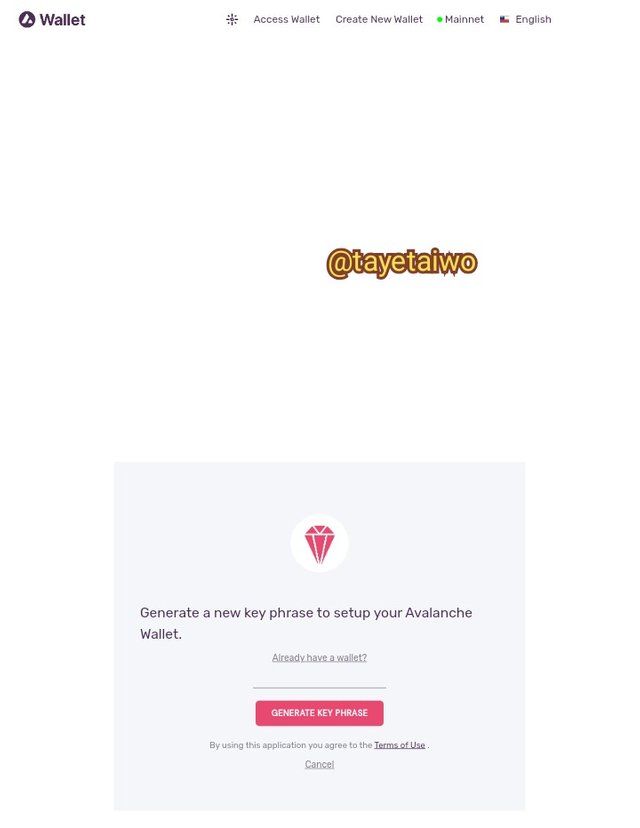
To create a wallet, click "create your wallet," which will take you to a screen where you may construct a key phrase.
Avalanche Explorer
Users may use the explorer to look up transactions, addresses, and other activity that have been logged on the Avalanche network.
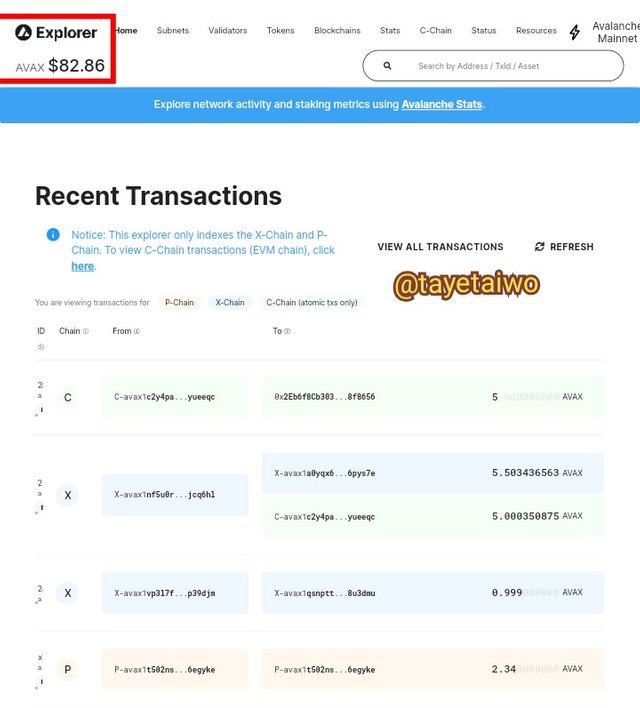
To use the Explorer, go to "Open the Explorer" and select "Open the Explorer." The Explorer page will display.
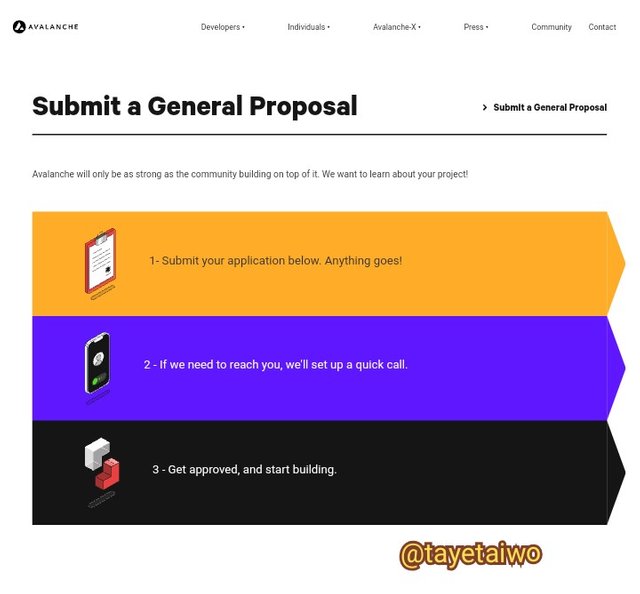
Users may apply and receive grants on the Avalanche network with Avalanche-X, allowing them to build their project on the Avalanche network. There are three steps to the procedure:
• Send in your application.
• You will be contacted right away.
• Obtain grant approval and begin construction.
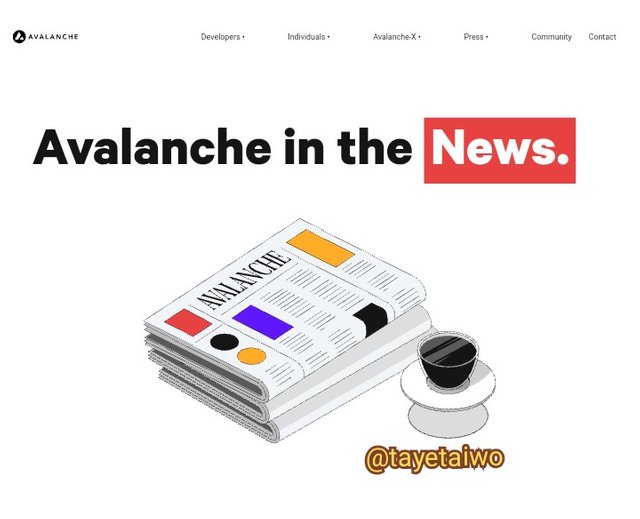 | 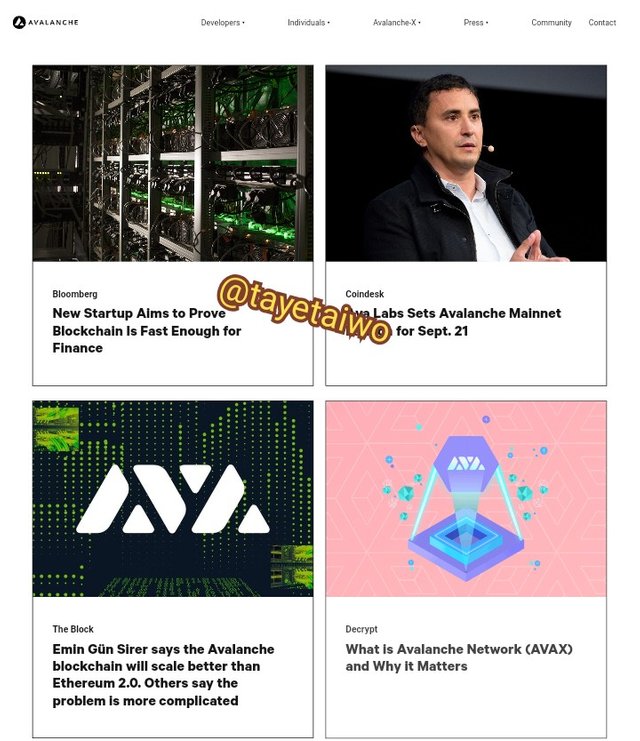 |
|---|
This website contains information on the Avalanche network and the community.
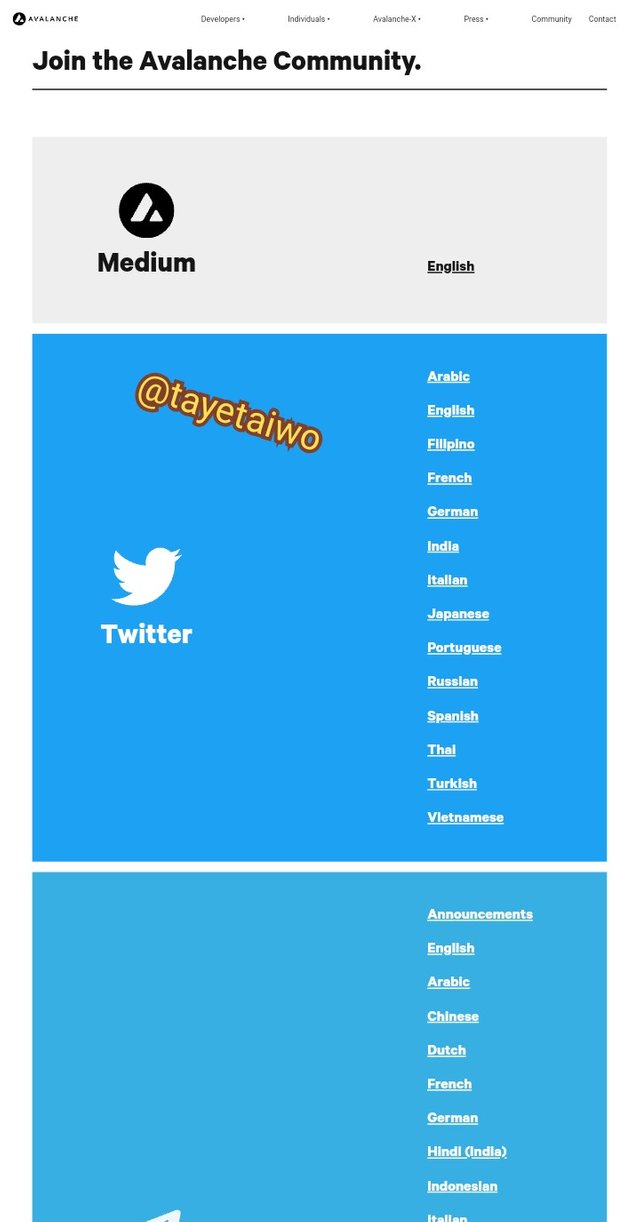 | 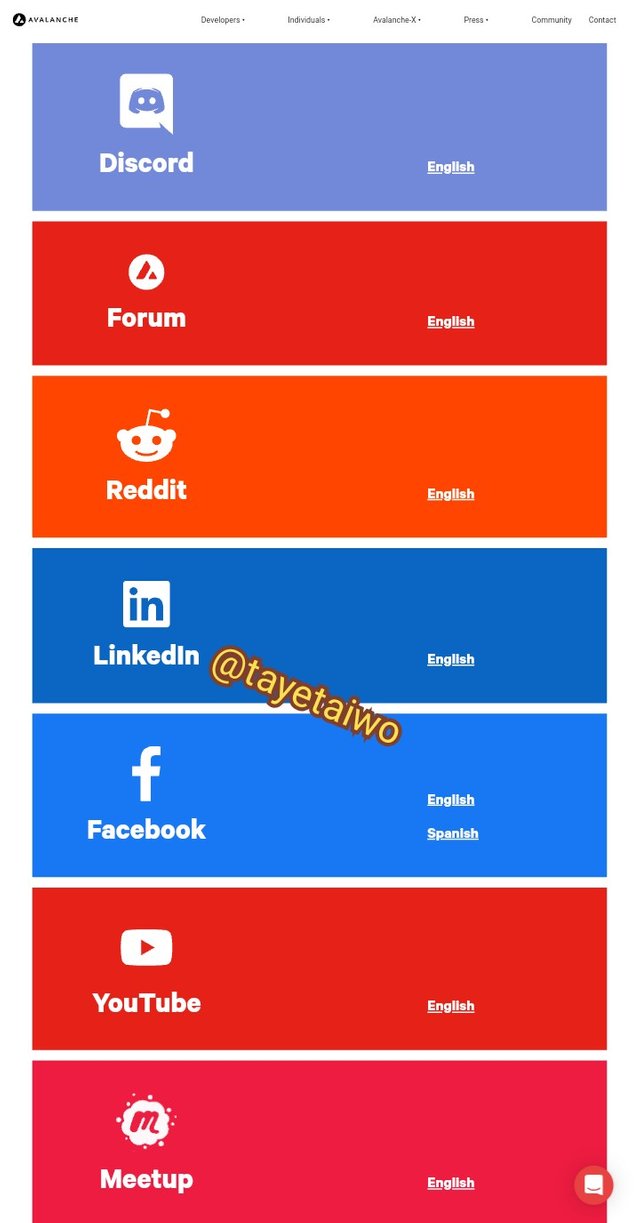 |
|---|
Medium, Twitter, Telegram, Discord, Forum, Reddit, Linkedin, FaceBook, YouTube, MeetUp, and Clubhouse are examples of such communities.
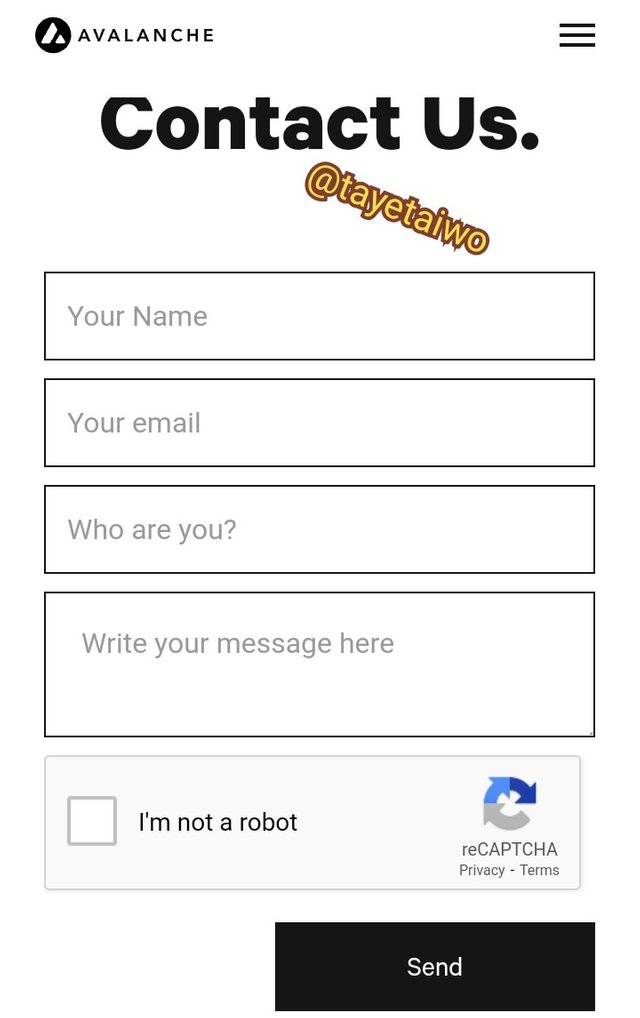
You can contact them by sending fill the form about yourself and write the message u would like to deliver.

3. Show the last contract verified in the C-Chain network and show the Smart Contract that was generated at that address. Screenshots required.

• To begin, visit SnowTrace and click on Blockchain menu on the top bar.
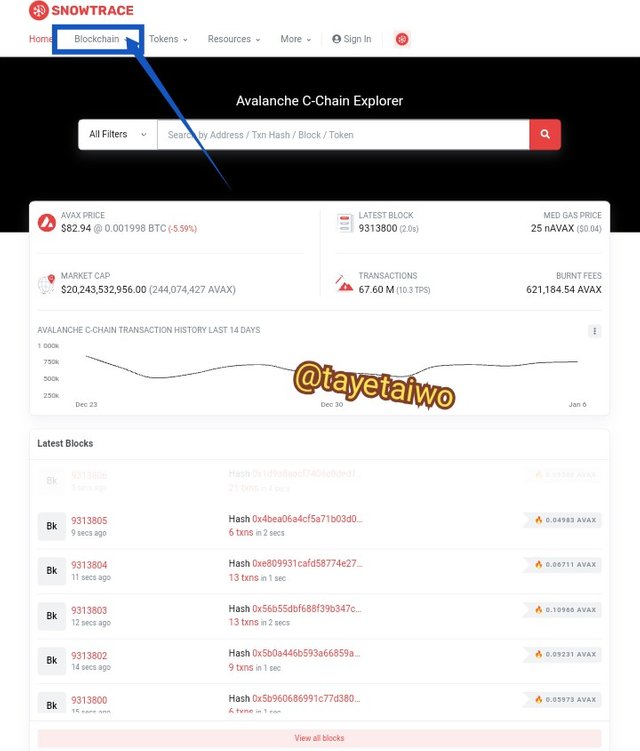
• After select the Verifies Contracts option.
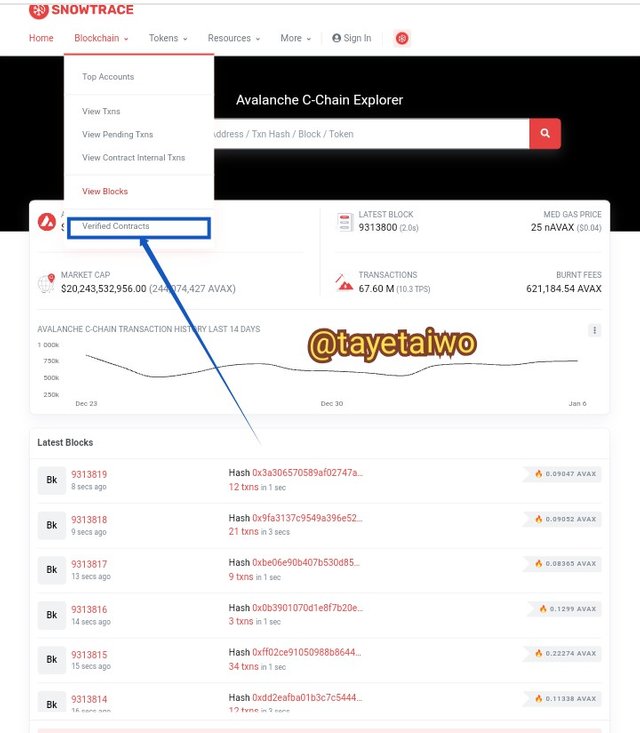
• Now you'll see a list of Verifies Contracts. Select the first option; it is the most recent contract that has been validated. It's called Distributor in my instance.
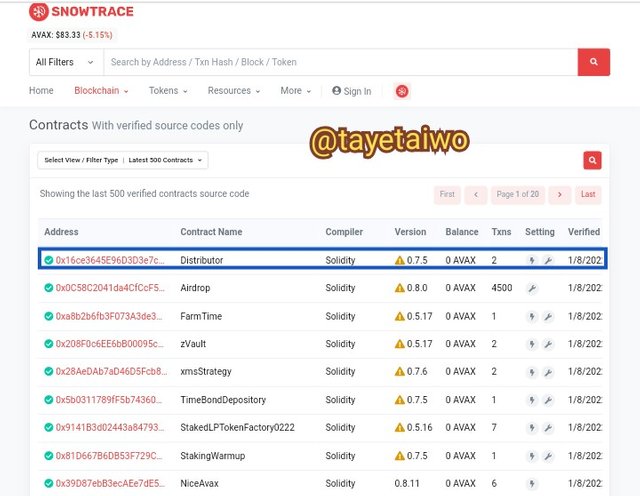
• After clicking on the contract, all of the contract's details will show.
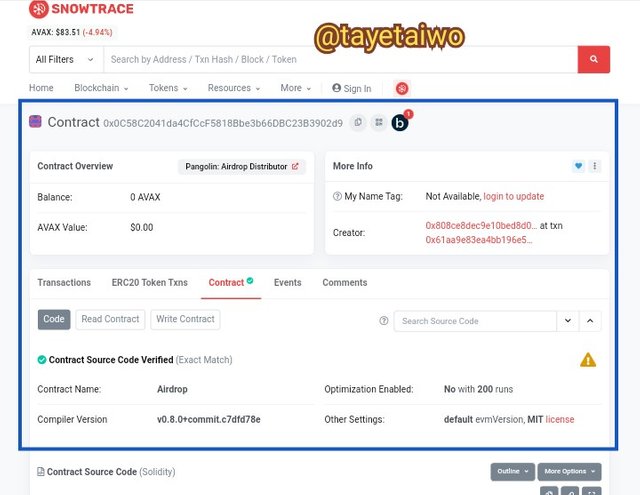
This data may alternatively be represented as a table. This is how it goes:
| Contract Address | 0x16ce3645E96D3D3e7c09f6aFfeda163D8e5a0c3a |
|---|---|
| Balance | 0 AVAX |
| Contract Creator | 0x808ce8dec9e10bed8d0892aceef9f1b8ec2f52bd |
| Hash | 0x0C58C2041da4CfCcF5818Bbe3b66DBC23B3902d9 |
| Contract Name | Airdrop |
| Compiler Version | v0.8.0+commit.c7dfd78e |

4. Explore the last block generated in the C-Chain network. Screenshots required.

• First and foremost, open SnowTrace and select Blockchain menu in the top bar.

• Then Click on View Blocks option.
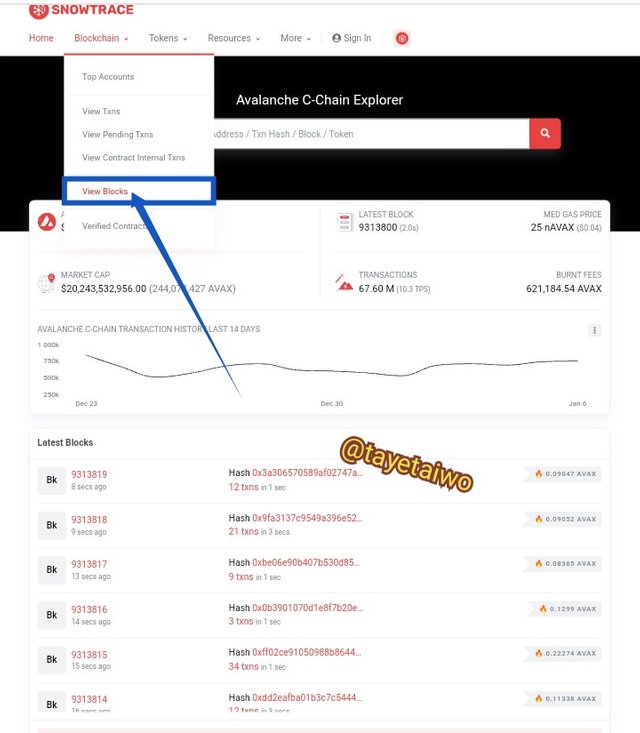
• Now you'll see a list of the latest blocks. Click on the first block, which in my instance is 9314055.
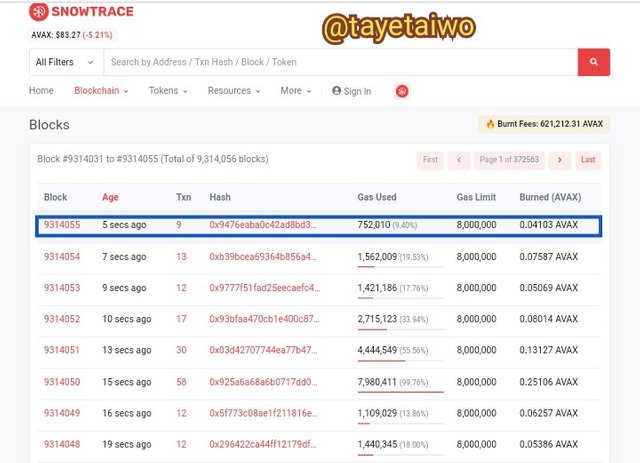
• You can now proceed to explore the block. The following screenshot contains all of the information about the block.
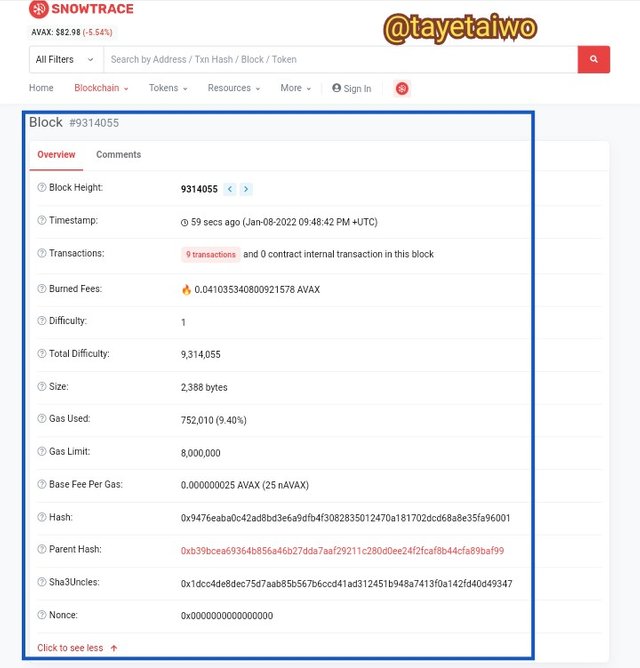
| Block Height | 9314055 |
|---|---|
| Timestamp | 59 secs ago (Jan-08-2022 09:48:42 PM +UTC) |
| Transactions | 9 transaction and 0 contract internal transaction in this block |
| Burned Fees | 0.041035340800921578 AVAX |
| Difficulty | 1 |
| Total Difficulty | 9,314,055 |
| Size | 2,388 bytes |
| Gas Used | 752,010 (9.40%) |
| Gas Limit | 8,000,000 |
| Base Fee Per Gas | 0.000000025 AVAX (25 nAVAX) |
| Hash | 0x9476eaba0c42ad8bd3e6a9dfb4f3082835012470a181702dcd68a8e35fa96001 |
| Parent Hash | 0xb39bcea69364b856a46b27dda7aaf29211c280d0ee24f2fcaf8b44cfa89baf99 |
| Sha3Uncles | 0x1dcc4de8dec75d7aab85b567b6ccd41ad312451b948a7413f0a142fd40d49347 |
| Nonce | 0x0000000000000000 |

5. Explain in detail the Avalanche consensus protocol and the Snowman consensus protocol.

The X-chain, where AVAX tokens and other crypto assets are traded/exchanged and new tokens are produced, uses this consensus system. In this consensus mechanism, all transactions are confirmed and verified at the same time. This indicates that all nodes are present in equal numbers and that the transaction is verified quickly. There is no requirement for a leader, unlike other consensus protocols such as Proof-of-Work (PoW), Proof-of-Stake (PoS), and Delegated Proof-of-Stake (DPos). The lack of a leader promotes the blockchain's decentralization, although scalability is unaffected.
A transaction is processed by a single node in other consensus protocols like as PoW, PoS, and DPoS, and then validated by additional nodes. All transactions are handled and verified quickly, resulting in faster transaction speed. The transaction is validated in the form of vertices without the need for a block to be constructed (parented transactions).
The Snowman consensus protocol is an extended version of the Avalanche consensus mechanism. The C-Chain (The Contract Chain) is where smart contracts are generated and managed, and this consensus mechanism is employed there. This is also utilized in the P-Chain (Platform Chain), which is where subnets are created. This consensus process differs from the Avalanche consensus technique in that the transactions are ordered linearly rather than parallelly.
The nodes are not all present at the same time or in the same order. Smart contract recording and smart contract transactions are completed quickly and effortlessly. In this consensus system, blocks are formed after transactions are processed.

Conclusion

The Avalanche blockchain is a solution to numerous previously existing blockchain issues, such as Bitcoin's scalability and Ethereum's speed, and it is completely decentralized, resulting in perfect trust. Avalanche can process up to 4500 transactions per second, making it a scalable network. Additionally, transaction fees are low.
I would like to thank @pelson53 for this wonderful lecture, thank you so much Professor God bless you 🙏😇